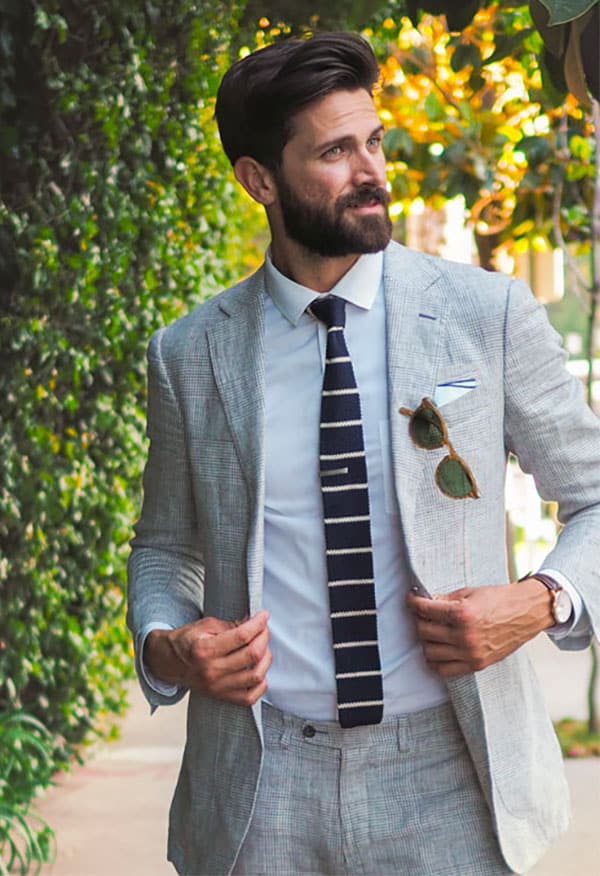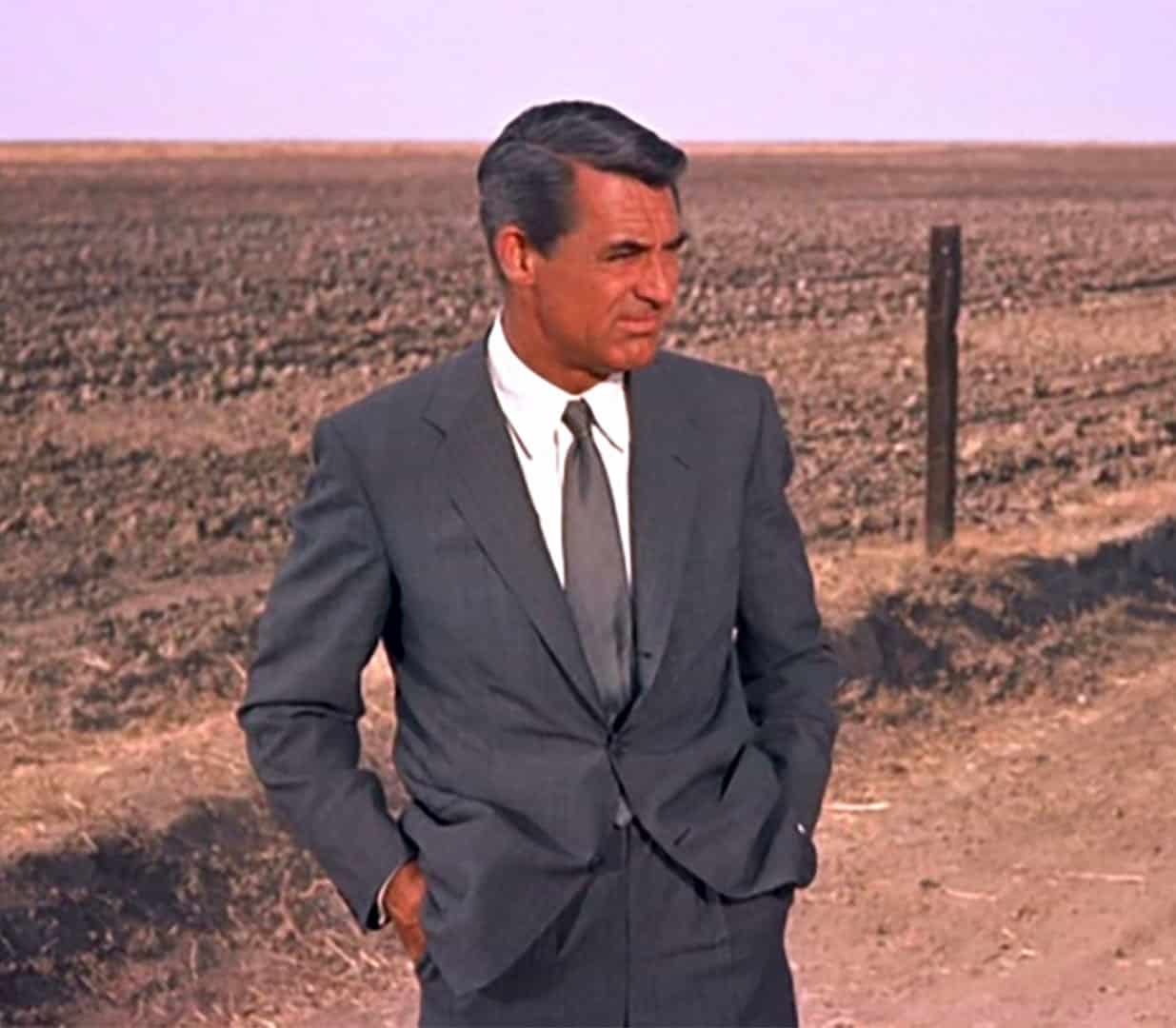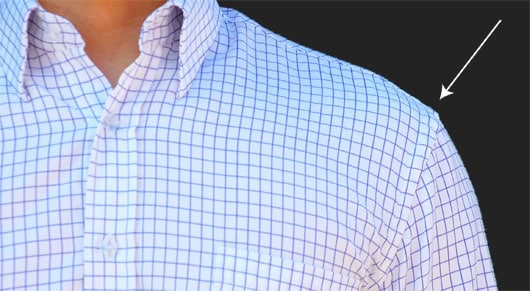
 |
We partnered with KK & Jay on this post because they make their shirttail garters right here in Brooklyn, New York. Primer readers save 20% and get free shipping with code PRIMER, making a set only $23.99.
What is this? |
It’s easy to dress up, right? As the Piano Man says, “All you need are looks and a whole lot of money.”
For some, it means dropping serious cash on designer brands. For others, it means chasing trends. But for a lot of guys, dressing up is a more thoughtful process. It means being frugal and choosing your key pieces carefully; it means taking inspiration from sources both contemporary and classic; it means pairing your favorite slacks with the right button up and blazer so you feel equally confident at work and out on the town. It’s that same thoughtful process we try to embody at Primer.
Too bad all that careful effort can be destroyed. In an instant.
Even if you’re choosing your combinations carefully, a dressier look can instantly be undermined if the details are sloppy. We’ve all seen the guy in a $2000 off-the-rack designer suit whose pants are too baggy, or the gent whose loud accessories aren’t so much flash as fail.
So we’ve compiled eight essential tips and tricks for ensuring you look your absolute best when dressed up. Whether it’s work, play, or a wedding – heed these key checklist items to make sure your dressed up style conveys the right message.
Keep Your Shirt in Place
There’s nothing more satisfying than putting the finishing touches on your favorite suit or blazer combo and stepping back for a long, appraising look in the mirror.
The problem is, that polished, perfect look is like an orchid: ephemeral.
The instant you step away from the mirror and start to move around your shirt starts to untuck, bunch, and balloon. It’s a natural consequence of tucking in your shirt, and the issue is made worse by the low-friction fabrics used in most dress clothing.
Well, we’re sick of it. We’re not mannequins. You should be able to dress up and move around without ruining your look.
All-American company KK&J has a solution that’s both modern and charmingly old-timey: shirttail garters. Originally developed for military officers who had to abide by spit and polish dress regulations, shirttail garters went out of style before enjoying something of a renaissance in recent years.
The principle is simple: The elastic bands clip to the bottom of your shirt, and the loop around your calf provides tension so that your shirt has nowhere to go – no bunching, pulling out, or sliding left or right.
Now, that might sound uncomfortable or weird to wear. Let us assure you – it takes about five minutes to get used to before you forget you’re wearing it. Contrast that to bunching and untucking, which provides a near-continuous distraction when wearing a suit or blazer and button-up.
Manufacturing is done entirely in Brooklyn, NY, making the KK&J shirttail garter a made in America piece of kit.

Originally used by military officers, shirttail garters are the well-dressed man's secret weapon. American-made Shirttail Garters KK&Jay
We’re proud to partner with KK&J because this is a product we use and value here at Primer. Editor & Founder Andrew wears them every time he speaks at a conference or gives a toast at a wedding. The visual difference in an outfit that utilizes shirttail garters versus one that doesn’t is undeniable. The confidence you get from knowing you don’t have to duck out for a quick tuck … priceless.
Don’t Wear a Tie That’s Lighter than Your Shirt.
Dads are known for their bad jokes. But they’re also sources of good advice, some of it sartorial (dad jeans and socks with sandals memes to the contrary). So when one Primer staffer – who wishes to remain anonymous – chose to wear a dark shirt with a light tie when he was younger, his dad gently drew him aside and shared these words of masculine fashion wisdom:
“You look like a mafia character, son.”
Your tie should be darker than your shirt to add visual interest and create a balanced color palette. Don’t believe us? Take a look at every well-dressed celebrity online or in magazines: Their ties will always be darker than their shirt.
Your Tie: Not Too Short, Not Too Long
Since we assume none of our readers are young enough to be dressing for Sunday school, having the right tie length is absolutely essential for an error-free dressed up look.
The question is, what’s the “Goldilocks” length for your tie?
Unlike some topics in men’s style, this question has an answer that’s fairly widely accepted by the internet. A tie should extend to an area somewhere between the top of your trousers to mid-way down your belt. Now, that’s not much leeway, but it’s a helpful rule for knowing you’ve nailed the length when you’re in a rush.
While tie width has varied substantially with the times, tie length has remained fairly constant. Just look at this picture of Cary Grant from North by Northwest – while his jacket isn’t open it’s clear his tie doesn’t descend past his waistline. This film is from 60 years ago.
If Your Suit Jackets Are Comfy, They’re Probably Too Big
The biggest mistake guys make when dressing up with a blazer or suit jacket is buying a size – or more – too large. Nothing makes you look like a kid at a wedding more than a too-large suit jacket.
The mistake is natural. As a culture, we’ve been conditioned to prefer looser clothing. Think about what most of us wear everyday: jeans, t-shirts, and the like – all items that are designed to fit more or less loose on the body.
Not so with suit jackets. A good rule of thumb: when trying on suit jackets or blazers, find a size that’s comfortable… and then size down one for the proper size. Why? They’re designed to be more form-fitting than a sweatshirt!
If you’re not sure if a jacket or blazer is too large or too small, do the shoulder-to-wall test. Don your jacket and, with your shoulder facing a wall (you’re perpendicular to the wall), slowly lean in to the wall. The shoulder of the jacket and your upper arm should touch the wall at the same time. If the shoulder pad touches the wall and scrunches up before your upper arm touches the wall, the jacket is too big.
The jacket below is at least one size too big.
For more info on the fit of suit jackets check out our guide to getting your best suit jacket fit.
Dress Pants Shouldn’t Fit Like Jeans, and You Shouldn't Wear Them Like Jeans Either
Most of us are comfortable in jeans – both physically and sartorially. They're everyday, they're acceptable. We know what we like and how to wear them.
A huge mistake we see a lot is when guys try to transpose their denim preferences onto dressier pants. Chinos, dress pants, suit pants, and the like shouldn't fit like jeans – they have their own fit standards.
The most common error is wearing dressier pants too baggy or too long, but it can also go the other way. Men who prefer skinny jeans sometimes opt for equivalent fits in their dress pants. Whether baggy or skinny, both scenarios make the final outfit seem disjointed and out of proportion.
The goal should be fitted. Dress pants are optimally slim and tapered.
Getting the fit down is only half the battle. One of the biggest mistakes guys make when wearing dress pants is wearing them too low.
This isn't a rant on how the kids are sagging their knickers too low. Because chinos and dress pants made of wool, linen, or cotton are thinner and have less structure, wearing them lower – the way you might with jeans – causes the pockets to flare out and the crotch to bunch up. Not only that, you're going to give yourself one heck of a droopy butt.
If you think you're wearing your dress pants at the proper place and you're still getting bunching and flaring, it may be an indication that the pants have an insufficient rise for your body.
Wearing a Blazer With Baggy Jeans
Similarly, when you do wear jeans with a blazer they should be fitted like dressier pants, not casual jeans. The blazer is dressing up the jeans – the jeans aren't dressing down the blazer. So for a balanced silhouette, the fit should echo your favorite pair of trousers: a slim cut that’s close-fitting but not skin tight.
This is a problem especially prevalent with middle-aged guys. I regularly see the 50ish year old man rocking a similar look to what Simon has on below.
If the Shirt Fits, Wear It. (If it Doesn’t, Tailor or Replace It.)
Are you wearing someone else’s shirt? Or does it just look that way?
A well-fitted dress shirt should be one of the foundations of your closet. Key phrase: well-fitted. A shirt that’s too tight or too baggy draws attention to you for all the wrong reasons. And it takes up a lot of your own attention, too. If your shirt fits properly, you shouldn’t have to spare it a second thought. If it’s the wrong size, you’ll spend far too much time fiddling with your cuffs, yanking on the collar, double-checking that your buttons are still buttoned, and either swimming in fabric or praying you don’t rip a seam.
Before you buy a shirt, make sure it fits these fit criteria:
Neck/collar: Measure (in inches) around your neck at the Adam’s apple. You should be able to button the collar and fit two fingers between the fabric and your neck.
Yoke: The piece between the collar and the back of the shirt, the yoke should fit comfortably across the breadth of your upper back. You should be able to move in a full range of motion while the shirt feels snug, but not too tight.
Shoulder seam: This is where the sleeve is attached to the body of the shirt. It should hit about on the corner of your shoulder. If the seam is hitting part of the way down your arm, the shirt is too big. If it’s closer to your neck, it’s too small.
Chest: Your chest should fill out the body of the shirt without straining the buttons. If you look like Bruce Banner mid-Hulking out, it’s too tight. This rule applies when standing straight up with your arms at your side. You will always have button-pull when moving.
Armholes: The human body is three-dimensional, and trying to form two-dimensional fabric into a three-dimensional garment often creates awkward shapes. Like armholes. Menswear designers often err on the side of cutting armholes larger than necessary, to fit a larger range of customers. You may have to try a few different brands and styles of shirt to find one that fits in the shoulder, chest, and armhole to find one that’s contoured properly for your body type. Too much fabric hanging under the armpit isn’t a good look. Neither is losing circulation.
Body: Your shirt should taper from the chest to the waist to create a clean line. A tailor can sew in folds, known as darts, on the back of shirt to taper the silhouette. Avoid shirts with too much blousing at the waist, unless you’re putting together a Seinfeld costume.
Length: When your shirt is buttoned but untucked, the tail should fall just below the back pocket of your pants. Too short, and it won’t stay tucked. Too long, and you’ll be trying to wrangle excess material that won’t tuck in neatly.
Sleeves: Button the sleeves; the cuff should hit roughly at the base of the thumb. Again, look for that “not too loose, not too tight…just right” fit. You should have enough give to be able to move easily, without stacks of extra fabric above the cuff.
The Devil’s in the Details
Let’s play a quick game of “one of these things is not like the others”: slim-cut Italian wool two-button suit jacket with double vent back; vegetable-tanned full-grain leather cap-toe Oxfords; 100% linen pocket square; Oakley “Navy SEAL” Half Jacket sunglasses. If you said the sunglasses, you’re right. You can wear sunglasses with a formal suit. But they can’t be the same sunglasses (or watch, for that matter) that you wear when you’re trekking through the woods or playing baseball with your league.
Just as a shirt or a suit can be more casual or more formal, your shoes and accessories can be classified as everyday or special occasion items, too. Make sure that they complement your overall look to avoid the sartorial equivalent of a record-scratch when you step out. Pay attention to color, pattern, silhouette, material, texture, and especially size – this should be a subtle finishing touch, not a scene stealer.
What are some of your tips for dressing your best? Share them in the comments!
Thanks again to KK&Jay for believing in Primer's mission and partnering with us to give Primer readers 20% off, making their shirttail garters only $23.99.




























